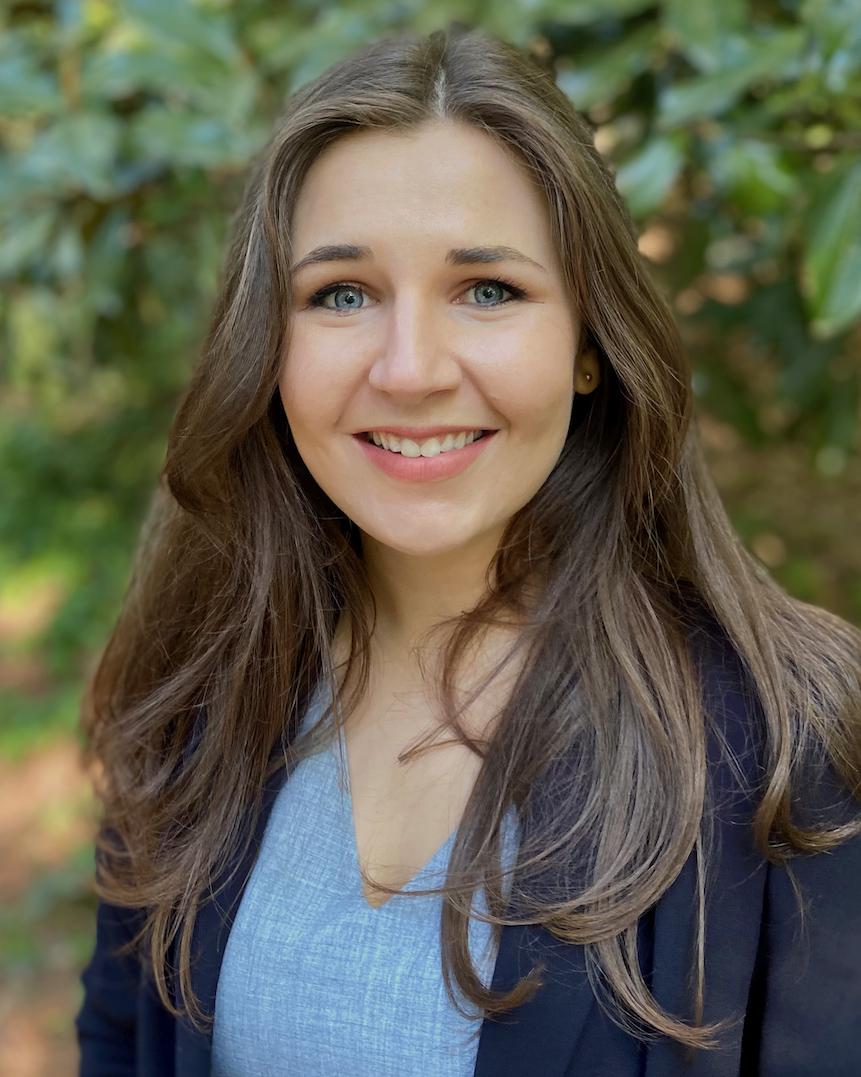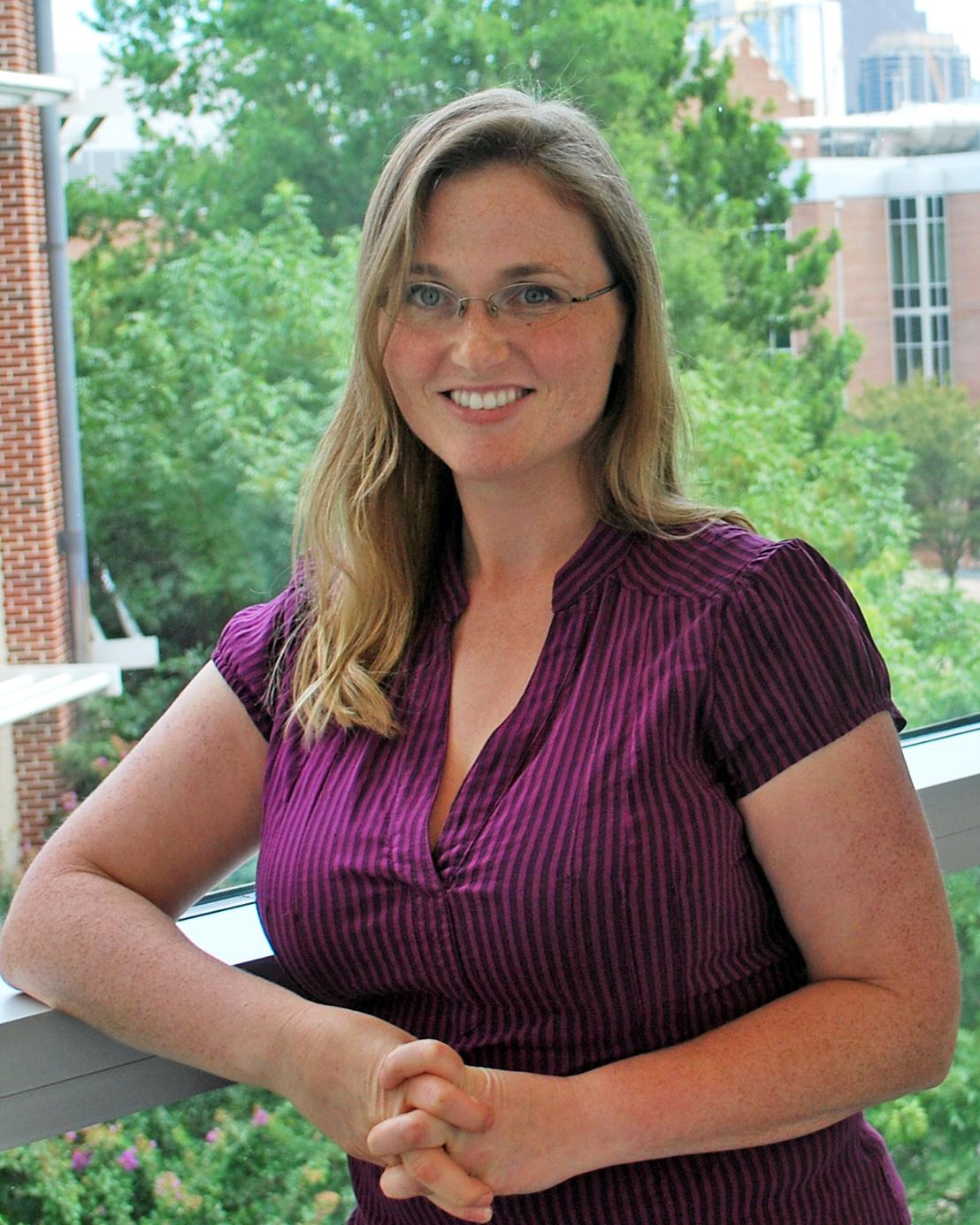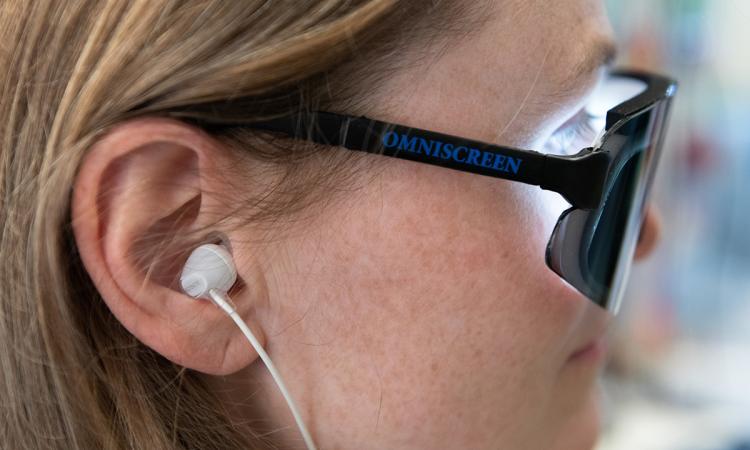Biomedical engineers show how two brain regions quickly adapt to shift focus from one planned destination to another.

Stephanie Prince explains her research with a scenario many Atlantans can relate to.
Imagine you’re driving to the Atlanta airport to pick up a friend. They call to say they’re in the terminal — but they’re not sure which one. North, maybe? You head that direction through the maze of roads around the airport.
Then they call back. They’re actually in the South Terminal. So you make a quick mental adjustment and switch your route to arrive at the correct side of the airport.
You had a plan. You received new information. You quickly changed your destination. The question Prince has studied is this: How does that process happen in the brain?
A new research paper in Nature Communications is offering insights into that decision-making. And it could help scientists as they work to better understand when brain disorders such as Parkinson’s and Alzheimer’s impair those processes.
(text and background only visible when logged in)
“... These systems go wrong in disease — including dementia and depression. Understanding the basic healthy process is fundamental to then understand how they go wrong in disease.”
ANNABELLE SINGER
McCamish Foundation Associate Professor
(text and background only visible when logged in)
The study by Prince, Annabelle Singer, and other collaborators showed the new information prompted one brain region to quickly shift to representing both the original and new destinations simultaneously. Meanwhile, another region considering those choices rapidly switches to the new destination.
Researchers didn’t know this dynamic change in brain activity takes place. Singer said it’s important to learn because navigation planning is a good model for a variety of planning processes in the brain.
“Some of what we're looking at could apply to planning more broadly,” said Singer, McCamish Foundation Associate Professor in the Wallace H. Coulter Department of Biomedical Engineering at Georgia Tech and Emory University. “The other important aspect is that these systems go wrong in disease — including dementia and depression. Understanding the basic healthy process is fundamental to then understand how they go wrong in disease.”
“We thought that maybe we would see some background information, but the two goal locations really dominate. That large increase of the brain representing both possible goals instead of one or the other was interesting.”
Meanwhile, in the decision-making prefrontal cortex, the mouse’s focus jumps from the initial destination to the new treat location, Prince said.
“That seems to happen before they've even changed their movement. It was really surprising to us to see those things happen so quickly.”
To decipher how brains drive navigation in changing environments, Prince designed an experiment using a virtual reality maze that she could change on the fly. As mice navigated the simple maze in pursuit of a treat, Prince recorded data from thousands of neurons in two brain regions: the hippocampus and the prefrontal cortex.

Prince

Singer
Both showed significant activity changes.
“Most of the time, the animals have this GPS system in hippocampus saying, ‘this is where I am currently.’ When we presented new information, suddenly they're not thinking about where they are. Instead, they're thinking about the old goal and the new goal,” said Prince, a former Ph.D. student in Singer’s lab who now works as a scientific data engineer at Lawrence Berkeley National Lab.
The study — supported by the National Science Foundation and the National Institutes of Health — helps address long-standing conflicting evidence in previous studies about what’s actually being represented or encoded in the hippocampus and how activity there supports deliberation and planning.
More broadly, the findings offer new information about cognitive flexibility in the face of new information, Singer said.
She added, studying rodent navigation offers value because they’re very good at it and that well-developed sense has parallels to what scientists have observed in humans.
The lab isn’t done with the detailed data Prince collected. Singer said the behavior they studied in these experiments is challenging. So her team is digging more into the large amount of neuron data to see what else they can discover.
(text and background only visible when logged in)
About the Research
This research was supported by the National Science Foundation, grant No. DGE-1444932; the National Institutes of Health, grant Nos. T32NS096050-22, R01NS109226, 2RF1NS109226, and RF1AG078736-01; the Packard Award in Science and Engineering; and the McCamish Foundation. Any opinions, findings, and conclusions or recommendations expressed in this material are those of the authors and do not necessarily reflect the views of any funding agency.
Citation: Prince, S.M., Cushing, S.D., Yassine, T.A. et al. New information triggers prospective codes to adapt for flexible navigation. Nat Commun 16, 4822 (2025). https://doi.org/10.1038/s41467-025-60122-8

Preeminence in Research
Related Content

Flicker Treatment's Benefits Could Extend Beyond Alzheimer's
New research shows a promising possible treatment for the degenerative disease modulates brain activity in ways that could benefit patients with other neurological disorders, such as epilepsy.
New research shows a promising possible treatment for the degenerative disease modulates brain activity in ways that could benefit patients with other neurological disorders, such as epilepsy.
Researchers Identify Crucial Biomarker That Tracks Recovery from Treatment-Resistant Depression
Harnessing the power of explainable AI, researchers have unveiled the first insights into the complex workings of deep brain stimulation therapy for severe depression.
Harnessing the power of explainable AI, researchers have unveiled the first insights into the complex workings of deep brain stimulation therapy for severe depression.